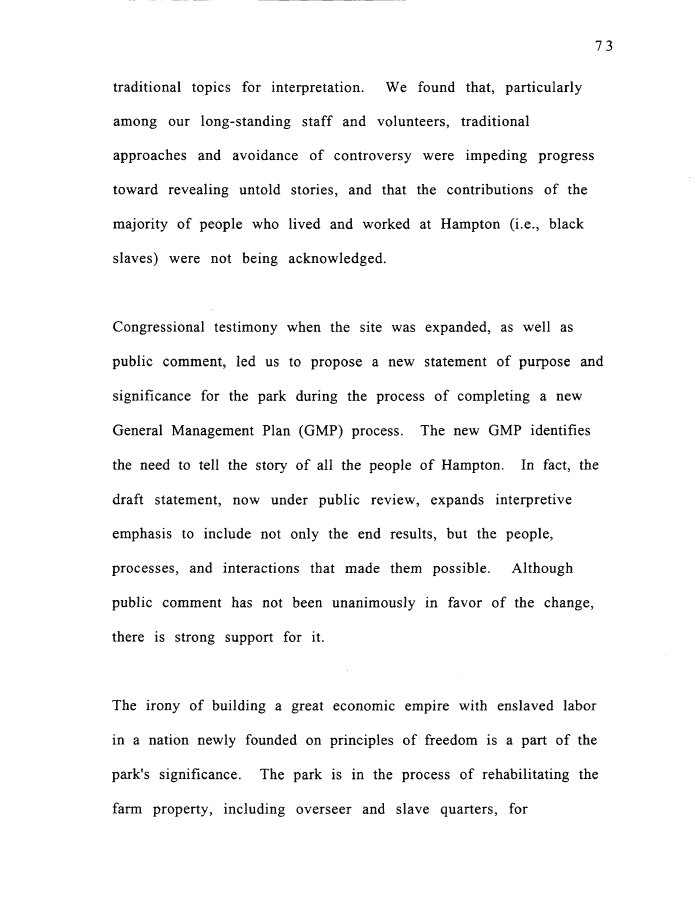 |
||||
|
TASK FORCE TO STUDY THE HISTORY AND LEGACY OF SLAVERY IN MARYLAND (Final Report) 1999/12/31 MdHR 991422 MdHR 991422, Image No: 82 Print image (40K) |
 |
||||
|
TASK FORCE TO STUDY THE HISTORY AND LEGACY OF SLAVERY IN MARYLAND (Final Report) 1999/12/31 MdHR 991422 MdHR 991422, Image No: 82 Print image (40K) |
| 73 traditional topics for interpretation. We found that, particularly among our long-standing staff and volunteers, traditional approaches and avoidance of controversy were impeding progress toward revealing untold stories, and that the contributions of the majority of people who lived and worked at Hampton (i.e., black slaves) were not being acknowledged. Congressional testimony when the site was expanded, as well as public comment, led us to propose a new statement of purpose and significance for the park during the process of completing a new General Management Plan (GMP) process. The new GMP identifies the need to tell the story of all the people of Hampton. In fact, the draft statement, now under public review, expands interpretive emphasis to include not only the end results, but the people, processes, and interactions that made them possible. Although public comment has not been unanimously in favor of the change, there is strong support for it. The irony of building a great economic empire with enslaved labor in a nation newly founded on principles of freedom is a part of the park's significance. The park is in the process of rehabilitating the farm property, including overseer and slave quarters, for |